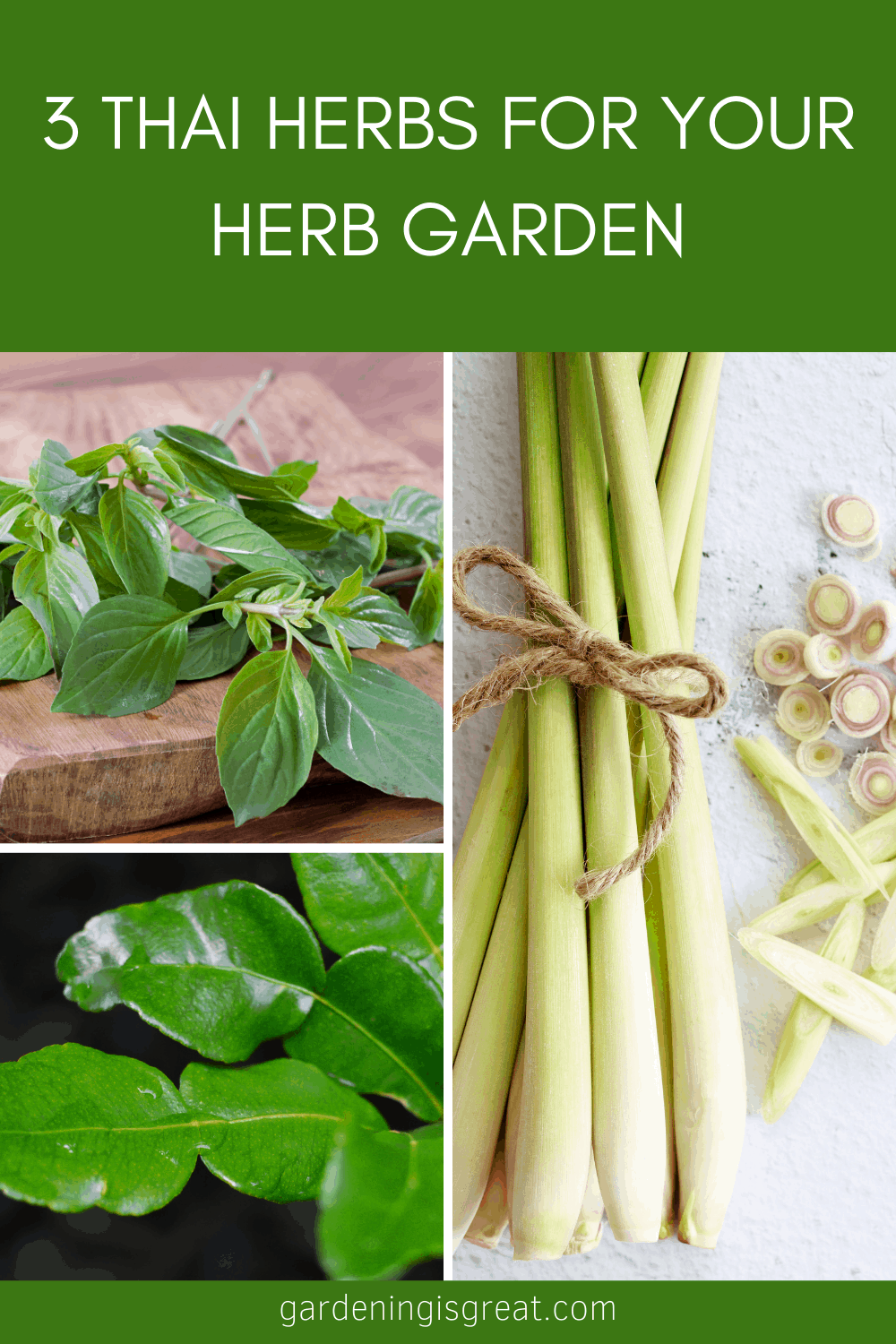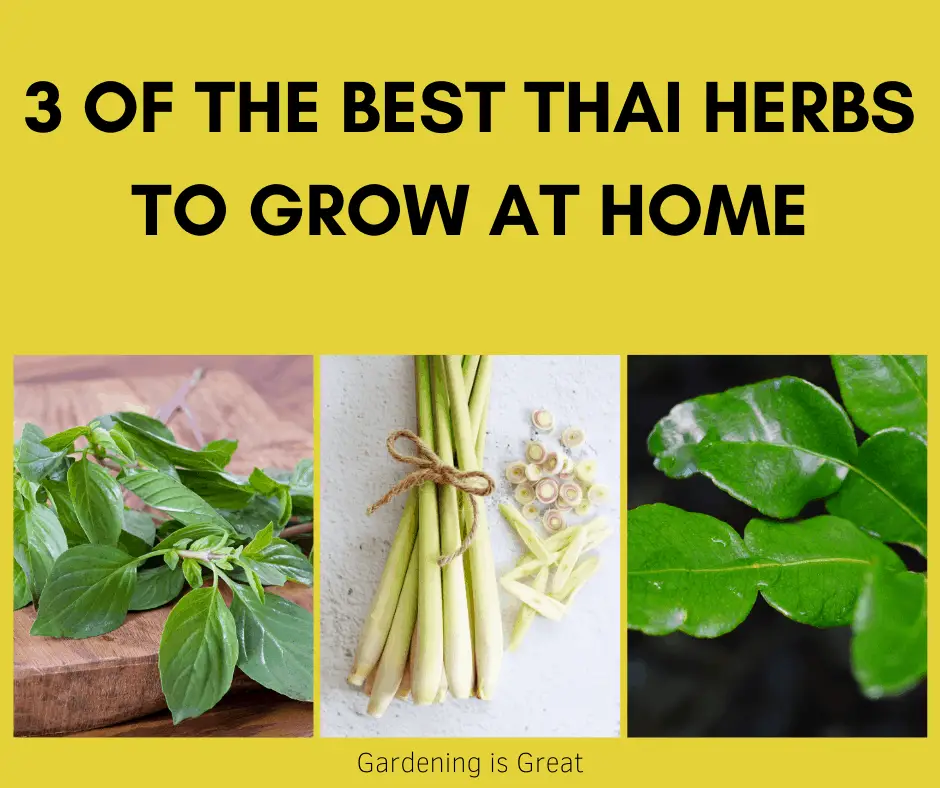The Best 3 Thai Herbs Every Herb Garden Should Have
Are you interested in growing a herb garden at home but want to grow some more unique herbs from around the world?
Thailand offers some of the tastiest and most aromatic herbs in the world, used to flavor classic dishes such as Thai soup and curry.
Although originally grown in a tropical climate, Thai herbs are quite adaptable and resilient. With this in mind along with their flavor, Thai herbs make an excellent addition to your herb garden.

[toc]
Take a look at these 3 popular Thai herbs you can grow in your garden:
Thai Basil
Unlike Italian basil, Thai basil has a spicier taste with an anise flavor. Its leaves are also stronger helping it to keep its shape during cooking. Thai basil is often used in spring rolls, curries, and soups.
How to Grow
Thai basil is a part of the mint family with thick green leaves and a purple stem. This herb prefers to be planted in direct sunlight and needs nutrient-rich soil.
It can be grown from seed or seedling, depending upon which you can obtain from your local garden center. Thai basil is quite delicate, so care is needed when handling to plant it.
As Thai basil is susceptible to cold weather, it is best to start your basil indoors. Add 4-6 seeds per pot. After they have germinated, thin the plants and place 1-2 in a larger pot.
If you wish to move your plants outdoors, wait until the weather is warmer and ensure to climatize your Thai basil by leaving outside for longer each day over 2 weeks.
How to Harvest
Thai basil is best harvested in the morning as the essential oils are released and intensify the leaves’ flavor. It also helps if you water your basil first before harvesting.
Cut off leaves as needed from the top of the plant and cut off any flowers to encourage the herb to focus its energy on growing more leaves.
Lemongrass
This Thai herb is used in many popular Thai dishes that would not taste the same without it. From soup to curry, lemongrass offers a unique flavor of lemon with a touch of ginger.
Grown in tropical climates, lemongrass grows with yellow stems, long leafy leaves, and white bulbs, similar to the appearance of green onions.
How to Grow
To grow lemongrass, plant a few seeds in each section of a growing tray between March and April. After they have germinated, separate the seedlings into individual pots.
As your lemongrass grows, you will need to transfer your herb into a larger pot. Lemongrass grows long roots and eventually will require a pot at least 8 inches deep.
After growing initially indoors to protect your lemongrass from the colder weather, you can move your pot outdoors and place it in an area that gets lots of sun and shelter.
Lemongrass is a perennial plant so if you want it to regrow the following season, remember to bring it inside before the first frost.
How to Harvest
Your lemongrass is ready to harvest when the stems are at least ¼ inch thick. Ideally, you want to cut as close to the bottom of each stem needed as that is the most tender part of the plant to cook with.
The leaves can also be harvested and dried. If you are harvesting the whole plant at the end of the season, rather than growing it as a perennial, you can freeze the lemongrass stalks for up to 6 months.
Cut the stalks into pieces to make it easier for cooking at a later date.
Makrut Lime Leaves
Makrut lime leaves, also known as Kaffir lime leaves, are an essential ingredient in Thai dishes. These leaves provide a distinct citrus flavor which is perfect for Thai stir-fries, curries, and soups.
They are used similarly to bay leaves, where they are added to a dish whilst it is being cooked to provide additional aromas and flavors, but then are removed before serving.
Makrut lime leaves are shaped like an hourglass with a double-leaf on each stem, where a second leaf grows at the tip of the first.

How to Grow
Makrut lime trees are natively grown in tropical climates within Asia and hence do not always succeed in other parts of the world. But, with a bit of extra care and knowledge, you can still grow your very own Makrut lime tree.
As it is a type of tree, do keep in mind that it can grow up to 12 feet tall. However, if you are considering growing it indoors with pruning you can reduce its potential height.
Unless you live in a tropical area, it is best to purchase a small Makrut lime tree from your local garden center.
Check the condition of your tree’s roots and remove any that may be rotten. Replant it in well-drained soil and in an area that gains lots of sunlight.
If you are living in a part of the world that does not experience tropical weather, you may want to consider planting your tree into a pot so that it can be brought indoors during the cooler months.
How to Harvest
The lime leaves are best picked fresh when you are ready to use them. It is a good idea every few weeks to pick a larger quantity of leaves to encourage new growth. Any additional Makrut lime leaves can be frozen to retain their citrus aroma.

These three Thai herbs will add a range of fresh aromas to your garden. Ideally, if you want easy all-year-round access to your herbs, it is best to keep them indoors or as close to your kitchen as possible.
Keeping your herbs indoors will help give you a fresh supply no matter the weather or season outdoors. It will protect your herbs from frost and help them to thrive in the warmth.
Just remember that these herbs originate from a tropical climate, so they still need access to plenty of sunshine. You also need to consider how much space they may need too, especially for the Makrut lime tree.
However, once they are established, each of these Thai herbs has minimal maintenance needs. They are easy to look after and offer a delicious flavor to your dishes that are unique to Thai cuisine.
If you are considering growing a range of herbs in your herb garden from around the world, take a look at these posts to get you started:
